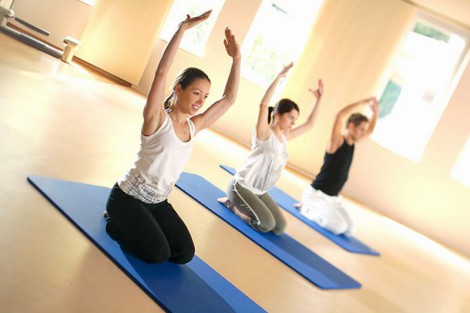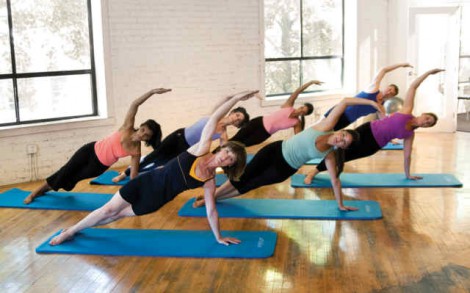Pilates, originally named “Contrology”, was devised by Joseph Pilates, in the early 20th Century. Its inventor believed that physical and mental health are interrelated and his method aimed to strengthen both the human body and the mind.
Soon after the elaboration of the method, it became popular in New York. Over time, the method spread across the world and became well-known as “Pilates”. It is recognised to be beneficial and effective in increasing the health and fitness levels of anyone, even those who have special conditions.
There are a few basic things to know about this method before hitting the mat or jumping on the specially-designed Pilates apparatus. Let’s see what are the things to know about Pilates to help you start.

What is Pilates?
Pilates is a comprehensive non-aerobic workout system. The focus of the Pilates body system is the core of the body, which is regarded as the powerhouse. This means that the Pilates method is devised to strengthen the centre of the body, to build endurance of the hips, back, abdominals, legs and arms and to improve flexibility, in particular of the spine and pelvis. Additionally, Pilates aims to improve the posture, balance and coordination of the body. The correct breathing technique is key in Pilates, too.
The Pilates method promotes perfect execution of the exercises. It does not demand a high number of repetitions, though. The method believes that less is more in case execution – with focus on each and every movement being done perfectly, with full concentration. Consequently, this method is known to improve concentration skills in addition to providing full physical conditioning.
Pilates can be used at all fitness levels. For beginners and for the unfit, it can be very gentle on the body. Its level of difficulty can be raised though, to intermediate and advanced levels. Once the higher intensity levels are reached, Pilates even challenges generally fit practitioners.

The Six Principles of Pilates
Pilates has six important principles that every practitioner, beginner to advanced alike, should keep in mind. These are as follows:
- Concentration: Concentration and focus are required to achieve precise and smooth movements. The way the exercise is done is more important than the exercise itself.
- Control: Muscle control is key in the Pilates method, which must be retained throughout the exercise.
- Centre: The centre of the body, (i.e. the abdomen, lower and upper back, hips, buttocks and inner thighs) is always in focus for the method. All movement starts in the centre and flows toward the limbs.
- Flow: Pilates aims for perfect execution of each exercise, transitioning smoothly into the next. The aim is to achieve an elegant sequence of movements.
- Precision: Pilates promotes correct execution of each and every movement.
- Breathing: Proper and full inhalation and exhalation is necessary to cleanse and invigorate the body. The Pilates method promotes breathing to be directed laterally, into the lower rib cage. The deep abdominal and pelvic floor muscles need to be engaged for both inhaling and exhaling. Furthermore, the proper breathing practice must coordinate with each and every movement that is executed.
What are the Benefits of Pilates?
- Pilates has a number of health benefits. Let’s see how you can benefit from practicing Pilates.
- Pilates promotes whole-body fitness. While Pilates focuses on strengthening the core of the body, it also perceives it as a whole, promoting full-body strength, muscle development and flexibility. While Pilates pays attention to the harmony of body and mind, it promotes total wellness.
- Pilates is suitable to all fitness levels, ages and various conditions. Pilates can be effectively used by starters, professional athletes, dancers and the elderly, too. It is a highly flexible fitness regime, which can be tailored to individual needs.
- Pilates strengthens without bulking up muscle. Pilates strengthens deep muscles of the core and tones the body by creating long and lean muscles.
- Pilates increases flexibility. Gentle stretching and bending is used to improve flexibility and joint movements.
- Pilates creates a strong, supple back. It supports the frame of the body and promotes good posture. It also improves movement patterns and balance. It helps you move gracefully and with ease.
- Pilates boosts energy levels by improving circulation, stimulating the muscles and contributing to better breathing practices.

All of these benefits will contribute to you feeling better and fitter. You will be able to control your body better. So, don’t hesitate to hit the mat or visit the nearest Pilates studio to try the apparatus under the supervision of a well-trained, specialised instructor.
